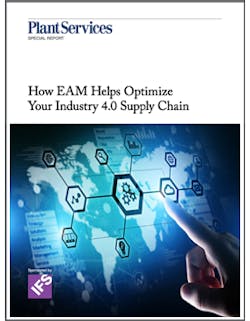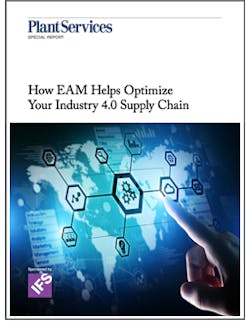Digital supply chains help manufacturers become more agile and scalable
Having a strong supply chain is more important now than ever before. Trade wars, viruses and other threats have tested the flexibility and resilience of supply chains across the globe, forcing manufacturers to change the location and speed of their supply chains.
But not all change is bad. New digital technologies and an abundance of available data are helping supply changes evolve and grow. In these tumultuous times, basing your decisions on the right information and advice is critical. Here are three industry perspectives on the changing landscape of the digital supply chain.
“EAM is both driving and being driven by supply chain digitization. Efficiencies gained in parts procurement, receiving, storage, delivery, and disposition reflect positively in maintenance efficiency, asset uptime, and performance. Similarly, improving asset management drives more lead time for procurement, lower inventory carrying costs, and fewer returns.
“Unique EAM requirements compel refinements in the supply chain. For example, it is not uncommon for equipment that is 50-70 years old to still be in operation and require parts during maintenance. Support is also needed for well-coordinated overhauls, depot repairs, equipment rentals, warranty claims, and service supply chains, including seamless movement and availability of the necessary parts, components, or equipment.”
Sheila Kennedy, CMRP, contributing editor
The role of EAM in the ongoing digitization of the supply chain
“In today’s world with a global supply chain fraught with long lead times, increased logistical costs, and unprecedented volatility, it is important now more than ever before that procurement workers and engineers collaborate to achieve the most efficient resolution to a part or system going down.
“Many times, engineers are left to their own devices when ordering automation products. This can create logistical and financial hassles that trained procurement professionals could easily avoid. Similar results can occur when procurement managers are left to purchase a product on their own. Oftentimes, the wrong part is requested from a supplier, or a part that was not even needed in the first place is ordered.
“It is important that these two types of professionals are trained on how to work together when making procurement decisions on automation and other advanced equipment. Some organizations may even consider embedding an experienced supply chain management professional in specific business or manufacturing units, or vice versa by adding a versatile engineer to a procurement team.”
Will Jacobsen, digital marketing associate, MRO Electric and Supply
Cross-train for supply-chain success
“We have disruptions that are really challenging supply-chain professionals right now. No. 1 is the supply market: Economies are good everywhere and suppliers are really busy; lead times are very long; supply costs are going up. So the challenge of still generating value by the supply-chain team is really, really tough.
“I think the No. 2 challenge is answering the questions around trade and the different kinds of regulations in the global market. I think everybody’s kind of in a new world now, understanding the implication of changes to NAFTA, changes in the EU, to trade relationships, the trade war between the U.S. and China, challenges in India, where they’re making changes to become more of an open economy. It also makes it a great time to have good partners.”
John Caltabiano, VP, Global Supply Chain, Jabil
Tariffs, tech, and your supply chain


